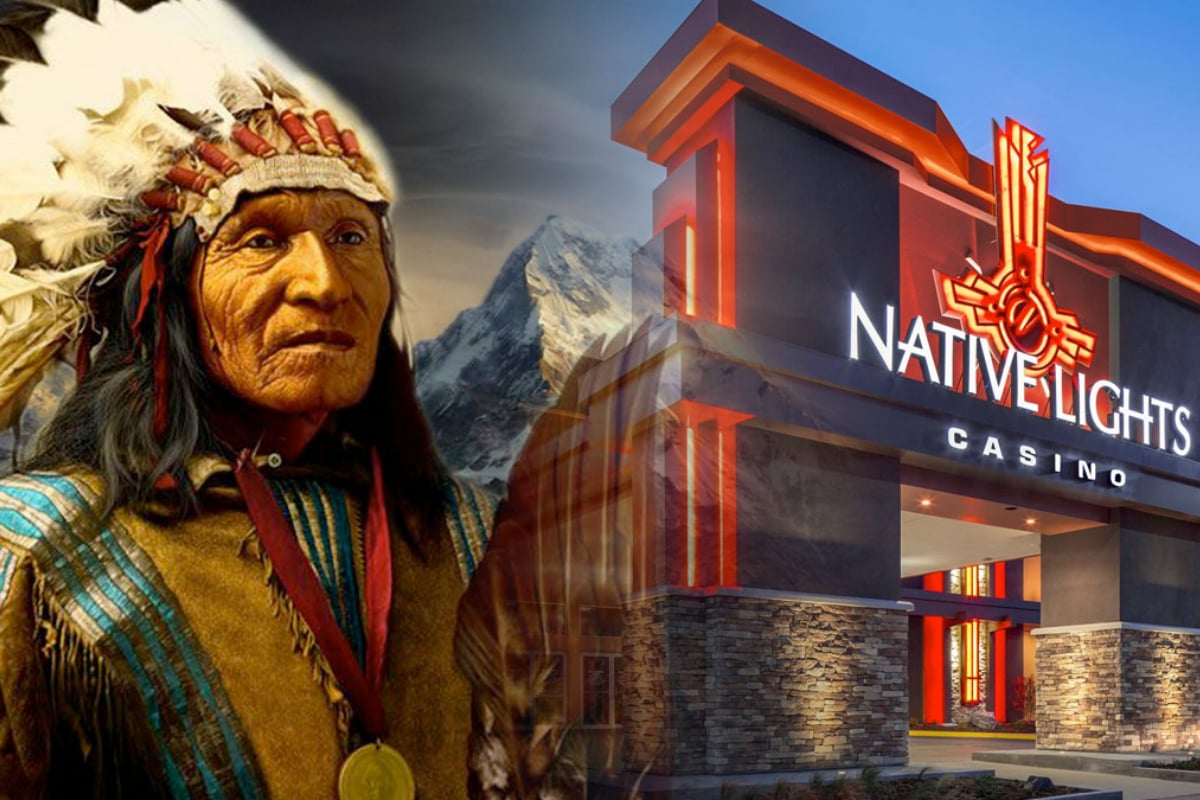
The Green Felt Revolution: How Native American Gaming Transformed Tribal Fortunes and Redefined Sovereignty
Decades ago, many Native American reservations were stark landscapes of poverty, unemployment, and neglect. Federal policies had systematically stripped tribes of their land, resources, and self-determination, leaving communities struggling with inadequate infrastructure, healthcare, and education. Today, however, a profound economic transformation has swept across Indian Country, largely fueled by the unlikely engine of the gaming industry. The rise of tribal casinos has not only generated billions in revenue but has fundamentally reshaped the narrative of Native American sovereignty, offering a powerful pathway to self-sufficiency and the revitalization of ancestral lands and cultures.
The journey began not with a grand federal initiative, but with the bold, entrepreneurial spirit of individual tribes seeking innovative ways to fund essential government services and create jobs where none existed. Faced with dire economic circumstances and limited options, some tribes began exploring small-scale bingo operations in the 1970s. These early ventures, often modest high-stakes bingo halls, quickly drew the attention of state governments, who saw them as a challenge to their own regulatory authority and a potential threat to state-sanctioned lotteries.
A pivotal moment arrived in 1987 with the landmark Supreme Court decision in California v. Cabazon Band of Mission Indians. The Cabazon Band, a small tribe in Southern California, had opened a bingo hall and card club, defying state attempts to shut them down. The Court ruled that if a state permitted any form of gaming for any purpose, it could not prohibit tribes from conducting similar gaming on their sovereign lands. This decision was a monumental victory for tribal sovereignty, affirming the right of tribes to engage in economic development activities free from state interference, provided the state itself allowed such activities.
The Cabazon decision paved the way for the Indian Gaming Regulatory Act (IGRA) of 1988. Recognizing the need for a comprehensive framework to regulate and oversee tribal gaming, Congress passed IGRA with three primary objectives: to provide a statutory basis for the operation of gaming by Indian tribes as a means of promoting tribal economic development, self-sufficiency, and strong tribal governments; to ensure that tribes are the primary beneficiaries of gaming revenues; and to establish federal standards for gaming on Indian lands.
IGRA categorized gaming into three classes:

- Class I Gaming: Traditional Indian games and social games for prizes of minimal value. This is exclusively regulated by tribes.
- Class II Gaming: Bingo (including with electronic aids), pull-tabs, lotto, punch boards, and non-banked card games (where players play against each other, not the house). This is regulated by tribes, with oversight from the National Indian Gaming Commission (NIGA).
- Class III Gaming: All other forms of gaming, including slot machines, blackjack, roulette, craps, and sports betting. This requires a tribal-state compact negotiated between the tribe and the state, and approved by the Secretary of the Interior.
This compact process for Class III gaming became a cornerstone of IGRA, requiring states and tribes to negotiate in good faith. While often contentious, these compacts established a framework for cooperation, allowing tribes to offer the most lucrative forms of gaming while often providing states with revenue sharing agreements or other benefits.
Today, Native American gaming is a multi-billion-dollar industry. According to the National Indian Gaming Commission (NIGA), the Gross Gaming Revenue (GGR) for tribal casinos in fiscal year 2022 reached an unprecedented $40.9 billion, representing a significant increase from previous years and underscoring the sector’s robust growth and economic resilience. This revenue is generated by over 500 gaming operations, owned and operated by 250 tribal governments across 29 states.
The economic impact of this industry extends far beyond the casino floor. Tribal gaming operations are major employers, directly providing hundreds of thousands of jobs, not just for tribal members but also for non-Native individuals in surrounding communities. The American Gaming Association (AGA) and NIGA consistently report that tribal gaming supports hundreds of thousands of direct and indirect jobs nationwide, making tribes significant economic anchors in many rural and underserved regions. These jobs often come with competitive wages and benefits, lifting families out of poverty and contributing to regional economic stability.
Crucially, the revenues generated by tribal casinos are not distributed to private shareholders, as is often the case with commercial casinos. Instead, under IGRA, these revenues must be used for tribal governmental services, economic development, or the general welfare of the tribe and its members. This fundamental difference means that gaming profits are reinvested directly into the communities that need them most.

This reinvestment has led to a dramatic improvement in the quality of life on many reservations. Gaming revenues fund:
- Education: New schools, scholarships, cultural immersion programs, and improved educational resources, allowing tribal youth to pursue higher education and vocational training.
- Healthcare: Modern clinics, hospitals, elder care facilities, and expanded health services, addressing chronic health disparities.
- Infrastructure: Paved roads, modern water and sanitation systems, improved housing, and access to broadband internet, transforming previously underserved areas.
- Public Safety: Enhanced tribal police forces, fire departments, and emergency services.
- Cultural Preservation: Funding for language revitalization programs, cultural centers, museums, and traditional arts, ensuring the continuity of unique tribal identities.
- Economic Diversification: Tribes often use gaming profits as seed money to launch non-gaming enterprises, such as hotels, resorts, entertainment venues, golf courses, retail centers, manufacturing plants, and even technology firms. This strategic diversification aims to build sustainable, multi-faceted economies that can thrive independently of gaming, ensuring long-term stability. The Mashantucket Pequot Tribal Nation, for example, used Foxwoods Resort Casino revenues to expand into diverse ventures, while the Agua Caliente Band of Cahuilla Indians in Palm Springs have developed extensive real estate holdings and hospitality businesses.
"Tribal gaming is more than just casinos; it’s a tool for self-determination," states a representative from the National Indian Gaming Association. "It allows tribes to exercise their inherent sovereignty, govern themselves effectively, and provide for their people in ways that were unimaginable just a few decades ago. We are building futures, not just businesses."
Yet, the story of tribal gaming is not without its complexities and challenges. Not all tribes have found equal success. Remote locations, market saturation, intense competition from commercial casinos, and management issues can hinder profitability. Furthermore, the rapid influx of wealth can sometimes create internal tribal tensions regarding revenue allocation, per capita payments to members, and long-term investment strategies. Critics also occasionally point to potential social costs, such as increased problem gambling or crime, though studies often show these issues are no more prevalent in tribal gaming areas than in other gaming jurisdictions.
Another significant challenge is the ongoing battle to protect tribal sovereignty. States frequently attempt to expand their regulatory reach or demand larger shares of gaming revenue, leading to protracted legal and political disputes. The push for online gaming and sports betting presents new frontiers for these battles, as tribes assert their right to participate in these emerging markets under the umbrella of their existing compacts and sovereign status.
Despite these challenges, the overall impact of Native American gaming remains overwhelmingly positive. It has served as a powerful engine for economic development, enabling tribes to reclaim control over their destinies and build thriving communities. It has transformed the economic landscape of Indian Country, turning areas once synonymous with deprivation into centers of commerce and opportunity.
In essence, Native American gaming represents a profound act of self-reliance and sovereignty. It is a testament to the resilience, adaptability, and entrepreneurial spirit of Native peoples. It demonstrates how, given the opportunity and the legal framework, tribal nations can leverage their inherent sovereignty to create economic prosperity, not just for their own members, but often for surrounding non-Native communities as well. The green felt revolution has indeed delivered far more than just entertainment; it has delivered hope, opportunity, and a renewed sense of pride and self-determination to Native America. As the industry continues to evolve, adapting to new technologies and market demands, its fundamental purpose remains unchanged: to empower tribes to build a brighter, more self-sufficient future on their own terms.